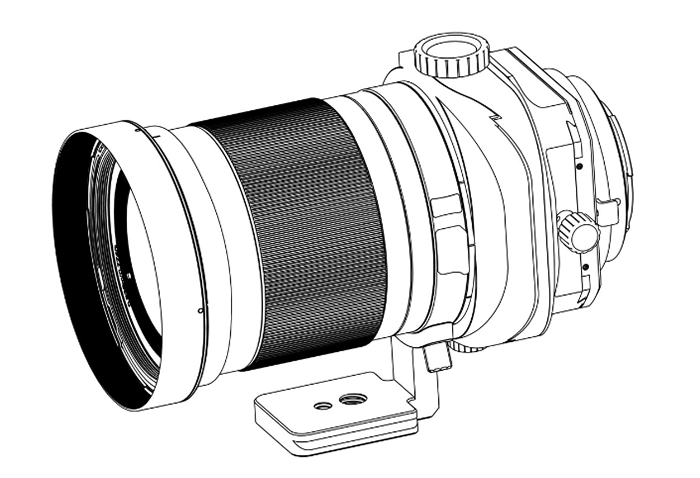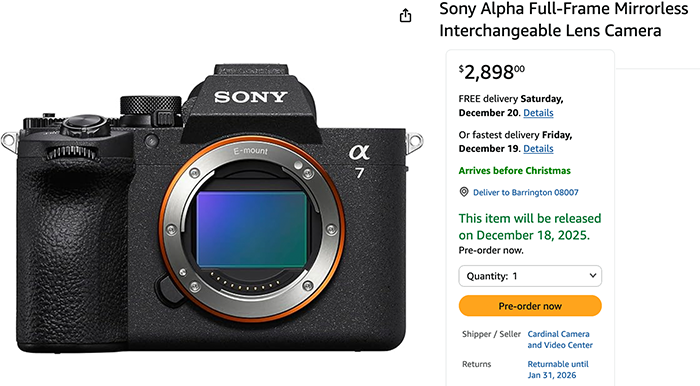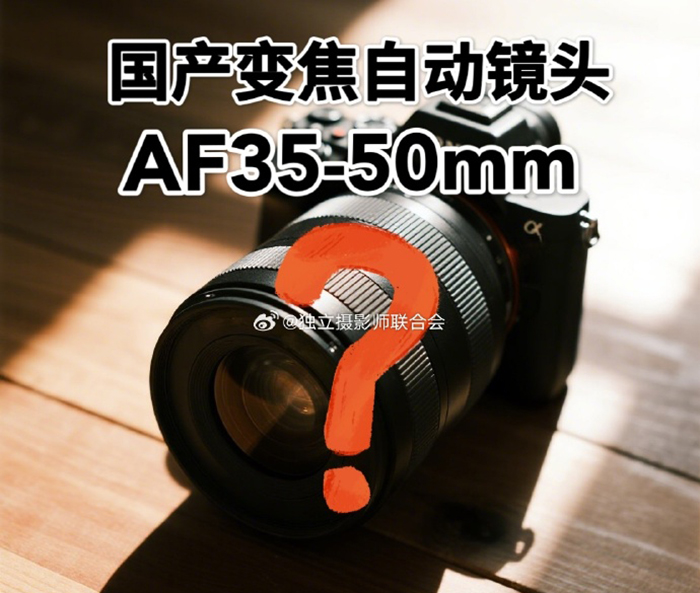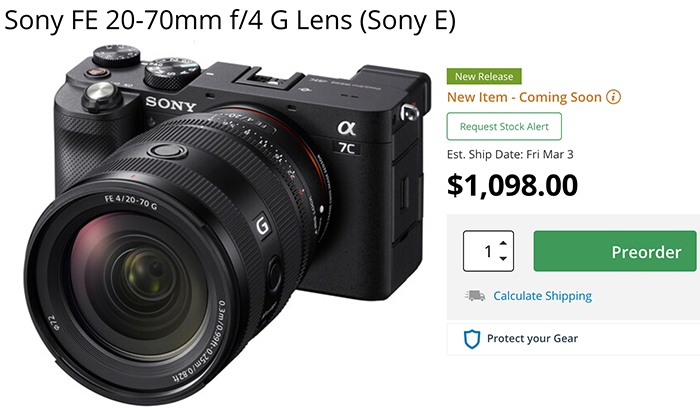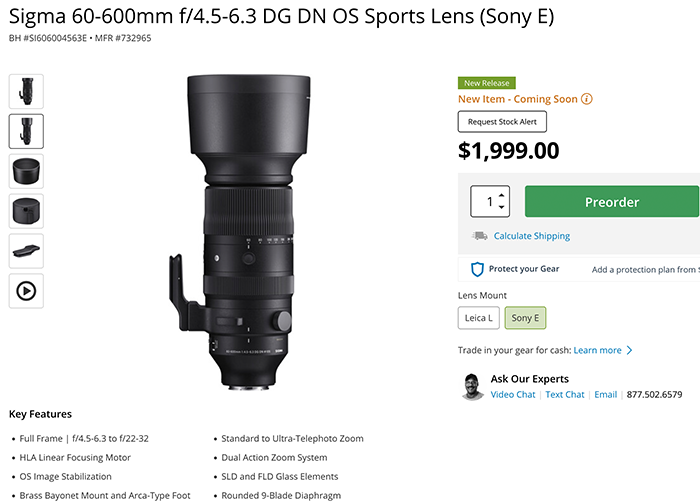Sony 20-70mm f/4 G review by SonyAlphaBlog: “a new masterpiece”
Preorders: BHphoto, Amazon, Adorama, FocusCamera, FotoKoch, Fotoerhardt, Calumet, WexUK.
SonyAlphaBlog tested the new Sony 20-70mm lens and concluded:
The Sony 20-70mm F4 G is a new masterpiece from Sony and create a new standard. The traditional 24-70 and 28-75 seems very limited compared to it. Its performance are excellent except on distortion and vignetting but those will be automatically corrected in software like Lightroom
DpreviewTV: The best camera for landscape photography
DpreviewTV made a list of the best landscape cameras you can buy:
Under $1000 budget:
- Winner: Panasonic G9
- Runner up: Sony A6100
Under $3000 budget:
- Winner: Nikon Z7II
- Runner up: Sony A7rIII, OM-1 and OM-5
Unlimited budget:
- Winner: Fuji GFX100s
- Runner up: Sony A7rV
Full Sony A7rV review by Dpreview: “results can be spectacular”
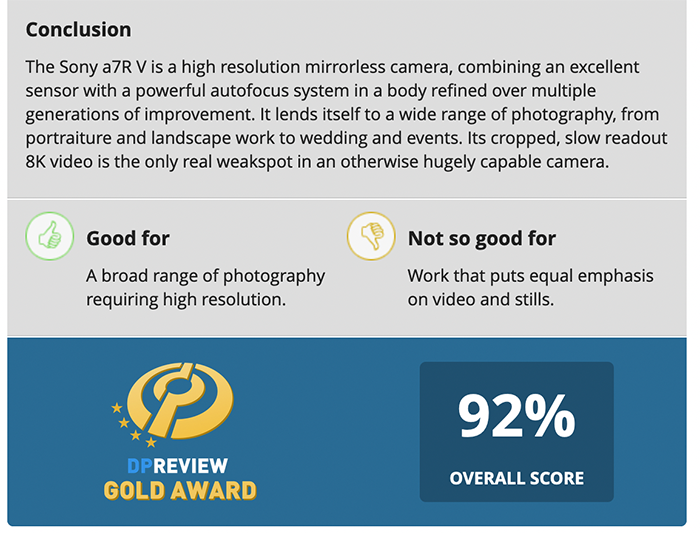
Dpreview published the full Sony A7rV review and concluded:
The Sony a7R V is a high resolution mirrorless camera, combining an excellent sensor with a powerful autofocus system in a body refined over multiple generations of improvement. It lends itself to a wide range of photography, from portraiture and landscape work to wedding and events. Its cropped, slow readout 8K video is the only real weakspot in an otherwise hugely capable camera.
–
If your photography benefits from high levels of detail capture, the a7R V is a camera that will do all it can to help you get the results you want, and those results can be spectacular.
Sony A7rV store links:
In US at BHphoto, Amazon, Adorama, FocusCamera, BeachCamera, Buydig.
In EU at Fotokoch, Amazon EU, FotoErhardt, Calumet DE, WexUK. ParkCameras UK.
In Australia at CameraPro, Camerahouse, Sony.
Sony A7IV vs Panasonic S5 II – IBIS / Stabilization Comparison
The Panasonic S5II features a curious new stabilization mode named “walk mode” See in this video how it performs against the Sony A7IV!
AI trickery: How to take a realistic portrait with a Sony A1 and 50mm f/1.2 GM lens…without to actually use the gear!

AI created portrait of a young women that doesn’t exist (Sony 50mm f/1.2 GM lens setting).
Intro:
I remember the days when digital photography was born. The voice was strong of those photographers who said digital isn’t real photography. It was a lost battle and nowadays it has become the absolute standard for photographic work.
Quickly after the days of Digital editing came: Photoshop filters, Topaz AI filters and Luminar…and again the voice was strong of those (now digital) photographers saying that this was the same as “cheating”. Nevertheless now it has become common to edit your images so much that the final photo is completely different from the original you took.
The AI revolution:
Now I am getting a lot of negative critic for even talking about the next AI revolution…which actually in my opinion is a simple “evolution” from what we already saw coming in the past years. In my heart I am still a medium format photographer, and my soul doesn’t love anything digital. This is why I created my analog Cube camera project (read about it here). But I am aware the world doesn’t care about my opinion or my ethical view about photography. The choice for me is simple: Ignore the current trends and rant on what’s about to happen, or open my mind about anything new and try to understand if I can still use it in a way that it fulfills my artistic goals.
Why does this matter for us Sony shooters?
- We photographers want to know how good (or bad) this shit is or not?
- You can use your real photos and modify them with AI
- It might kills some of the classic photography business (like Stock photography) but it also might open NEW Business opportunities!
- It might be able to emulate the style of some Sony gear (Camera colors, Lens bokeh and so forth)
What this video is about:
On my quest to understand the new AI tools I tried to answer this simple question: Can AI give me a portrait image that looks like it has been shot on a Sony 50mm f/1.2 GM lens? Here is what I found out:
Sigma 60-600mm review by SonyAlphaBlog: “In good lighting conditions performances are excellent in term of sharpness”
Preorders at BHphoto, Amazon US&EU, Adorama. Fotokoch. FotoErhardt. WexUK.
SonyAlphaBlog tested the new Sigma 60-600mm lens and concluded:
The Sigma 60-600mm F4.5.3 DG DN Sports (2369 euros) is a a monster zoom lens extending the classical 150-600mm to reach 60mm on the low end. This unique 10x range is very versatile and allow to use it for wildlife and sport to take group shoot as well as tiny detail of a player or a bird and to be able to follow a distant subject coming very close to you, which is the main issue with a 150-600mm where you are stuck when your subject is coming close.
In good lighting conditions performances are excellent in term of sharpness on the entire range with although a little drop a 600mm.
AF is also very good in standard situation but for fast moving subject , the lens loose track when subject was coming near or with erratic movements.Although build quality and ergonomics are very good there is 2 points to take into account: Weight is huge and you can hold it more than 1 minute and be steady, so a monopod or a tripod is a must with this lens. I was also annoyed not to be able to zoom fast as zoom ring is quite stiff. I also had to take my big bag to transport it.
